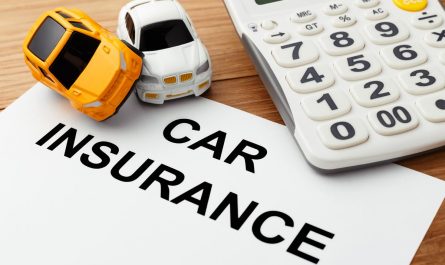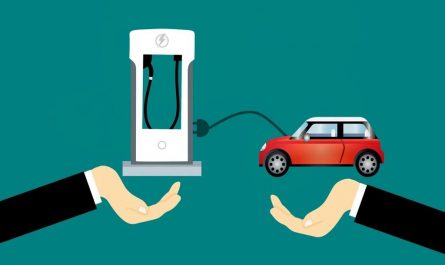In today’s evolving automotive and insurance landscape, traditional car insurance models are no longer the only option available to drivers. One increasingly popular alternative is pay‐per‐mile car insurance. This innovative model shifts the pricing structure from a fixed annual or monthly premium to one that directly tied to the actual mileage you drive. As a result, drivers who cover fewer miles than average may find themselves paying significantly less than they would under conventional policies. However, like every insurance solution, pay‐per‐mile insurance comes with its own set of advantages and drawbacks.
This comprehensive article examines the pros and cons of pay‐per‐mile car insurance, explains how it works, and offers guidance on whether it might be the right choice for you, so by exploring key concepts, benefits, limitations, technological factors, and real-world examples, this guide aims to provide you with a clear understanding of this personalized insurance option in an era where usage‐based pricing is reshaping many industries.
Understanding Pay-Per-Mile Car Insurance

Pay‐per‐mile car insurance is a usage‐based insurance model that calculates your premium based on the number of miles you drive. Unlike traditional policies that charge a flat rate regardless of usage, this model is designed to offer a fairer pricing structure especially for those who drive infrequently. In essence, pay‐per‐mile insurance typically combines a fixed base fee with a variable rate that depends on your actual mileage. For drivers who rarely use their vehicles, this can translate to substantial savings, as you are only paying for the coverage you need.
However, the model also comes with complexities that must be carefully considered. Many insurers require the installation of a telematics device or the use of a mobile app that tracks your driving behavior and mileage in real time. This device not only monitors how far you drive but often records other driving habits, such as speed, braking patterns, and time of day. All of this information is then used to determine your risk profile and adjust your premium accordingly. Understanding the inner workings of pay‐per‐mile insurance is crucial if you want to take full advantage of its potential benefits while being aware of its limitations.
How Pay-Per-Mile Insurance Works
The mechanism behind pay‐per‐mile car insurance is both innovative and data-driven. Initially, you typically pay a small fixed monthly or annual fee that covers the administrative costs of the policy. This fee ensures that you maintain a baseline level of coverage regardless of the mileage you drive. On top of this fixed fee, you are charged a per-mile rate that is calculated based on your driving behavior and risk factors. To accurately measure the miles you drive, insurers require you to install a telematics device in your vehicle or use a smartphone app that connects to the insurer’s system. These devices continuously monitor and record your mileage as well as other metrics like acceleration, braking intensity, and driving time.
The collected data is then analyzed using algorithms that assess your risk profile, taking into account factors such as whether you drive during high-risk periods (like late at night) or in hazardous conditions. The more safely you drive and the fewer miles you log, the lower your variable per-mile charge tends to be. In contrast, if you drive frequently or exhibit risky behavior, your per-mile rate might be higher. Ultimately, your total premium is a combination of the fixed fee plus the per-mile charges accumulated over your billing period. This dynamic pricing structure means that your insurance costs are directly proportional to how much you use your vehicle a model that offer significant savings for low-mileage drivers while ensuring that heavy users contribute more in line with their increased risk.
The Benefits of Pay-Per-Mile Car Insurance
One of the primary attractions of pay‐per‐mile car insurance is its potential to reduce costs for drivers who do not use their vehicles extensively. For many people, particularly those who work from home, have alternative transportation options, or simply drive less than the average commuter, traditional insurance policies can feel like an unnecessary expense. With pay‐per‐mile insurance, you only pay for the miles you actually drive. This means that if you drive 5,000 miles a year instead of 15,000 miles, your premium could be a fraction of what you would pay under a standard policy. This pricing model is inherently fairer as it aligns the cost of insurance with the risk you actually present on the road.
Another key benefit is the flexibility it offers. Since the premium fluctuates with mileage, drivers can potentially benefit from seasonal variations in driving patterns. For instance, someone who uses their car primarily during the summer for leisure trips and drives very little during the winter can see their overall costs reduced during low-usage months. Moreover, many pay‐per‐mile policies incorporate telematics programs that reward safe driving behavior. Insurers often provide discounts or bonus miles if the data shows that you are a cautious driver, meaning that your premium could decrease further as you maintain a clean driving record.
Furthermore, pay‐per‐mile insurance can be particularly appealing to urban dwellers who may not own a car full-time. For those who rely on public transportation, ride-sharing, or only use their vehicle for occasional errands, this model offers a way to maintain coverage without the high costs associated with traditional policies. Some insurers even offer hybrid policies that allow you to switch between pay‐per‐mile and traditional insurance based on your driving needs at different times of the year.
The Drawbacks and Considerations of Pay-Per-Mile Car Insurance
Despite its attractive benefits, pay‐per‐mile car insurance is not without its drawbacks. One of the primary concerns for many drivers is privacy. The telematics devices or smartphone apps used to track your mileage and driving behavior continuously collect data about your movements, driving patterns, and sometimes even your location. While insurers claim that this data is used solely to calculate your premium and improve safety, some drivers are understandably wary about how their information is stored and used.
Another potential drawback is the inconvenience associated with the telematics device. Some drivers may find the installation of a tracking device or the requirement to use a specific mobile app cumbersome. In addition, if the device malfunctions or the app experiences technical issues, it could lead to inaccurate mileage reporting and, subsequently, incorrect premium calculations. This could result in overcharging or disputes over billing, which adds an element of uncertainty to the pay‐per‐mile model.
Lastly, while many telematics programs are designed to reward safe driving, the algorithms used to calculate risk may not always reflect your true driving habits accurately.
Factors such as short trips, unusual driving conditions, or even errors in data transmission can result in higher risk scores, which in turn could increase your premium. Ensuring that the telematics system is reliable and accurately represents your driving behavior is an important part of making an informed decision about whether pay‐per‐mile insurance is right for you.
Comparing Pay-Per-Mile with Traditional Car Insurance
When deciding between pay‐per‐mile insurance and traditional car insurance, it is important to compare how each model aligns with your driving habits, risk factors, and financial goals. Traditional car insurance typically involves paying a fixed premium regardless of how much you drive, meaning that whether you drive 5,000 miles or 15,000 miles in a year, your cost remains the same. For drivers who use their car regularly, this model provides predictability and stability in budgeting. The fixed premium also means that you are not subject to fluctuations based on your mileage, which can simplify your financial planning.
On the other hand, pay‐per‐mile insurance offers a level of fairness that traditional insurance models may lack. By tying the premium directly to the number of miles driven, pay‐per‐mile insurance can be significantly cheaper for those who drive less. This makes it an attractive option for individuals with low annual mileage, such as urban dwellers who rely on public transportation or people who work from home. However, for high-mileage drivers, the cost of pay‐per‐mile insurance can quickly surpass that of a fixed-rate policy. Therefore, understanding your driving patterns is key to making the right choice.
Ultimately, the choice between pay‐per‐mile and traditional insurance comes down to a detailed comparison of your own driving habits, financial situation, and personal preferences. For low-mileage drivers, pay‐per‐mile insurance offers clear advantages in terms of cost savings and fairness. For those who drive more frequently, the stability and predictability of traditional insurance may be more appealing. It is essential to run the numbers, perhaps by using online calculators or consulting with an independent agent, to determine which model offers the best value for your specific circumstances.
Who Should Consider Pay-Per-Mile Car Insurance?
Determining whether pay‐per‐mile car insurance is right for you depends on several factors related to your driving habits, lifestyle, and overall risk profile. This model is particularly beneficial for drivers who do not rely on their vehicles on a daily basis. For example, if you work from home, use alternative transportation for most of your commuting, or only drive occasionally for leisure, pay‐per‐mile insurance can offer significant savings because you are charged only for the miles you drive.
Young drivers or new drivers who have low annual mileage may also benefit from this model. Although insurance premiums for new drivers tend to be high due to their lack of experience, the pay‐per‐mile model can help mitigate these costs if they do not drive extensively. Similarly, retirees or individuals who have downsized their vehicle usage after retirement might find that a pay‐per‐mile policy aligns well with their reduced driving needs.
It is also important to note that some insurers offer hybrid policies that allow you to switch between pay‐per‐mile and traditional pricing based on your current usage. These flexible models can be particularly useful for drivers whose mileage varies seasonally for example, someone who drives extensively during the summer months for vacations but much less during the winter.
Before making a decision, it is advisable to review your past driving records and estimate your annual mileage. Utilize online tools and calculators designed for pay‐per‐mile insurance to project your potential costs and compare them with traditional insurance quotes. Consulting with an independent insurance agent can also provide personalized insights that help determine if pay‐per‐mile insurance is a financially viable and practical option for your specific situation.
Technological Innovations and Privacy Concerns
The pay‐per‐mile insurance model relies heavily on technological innovations such as telematics, mobile apps, and data analytics. These technologies enable insurers to collect real-time data about your driving habits and mileage, which is then used to calculate your premium. While this technology-driven approach offers many benefits such as personalized pricing, safe-driving incentives, and dynamic risk assessment it also raises important privacy concerns.
Telematics devices and smartphone apps continuously monitor your vehicle’s location, speed, and driving behavior. Although insurers claim that this data is used solely to assess risk and adjust premiums, many drivers are understandably cautious about the potential for data misuse. Privacy concerns include the possibility of personal information being shared with third parties, used for marketing purposes, or even accessed by unauthorized individuals if security measures are not robust.
Moreover, some drivers may worry about the potential for inaccurate data collection. Technical issues with telematics devices or mobile apps could lead to errors in mileage tracking or misinterpretation of your driving behavior. Such inaccuracies can result in higher premiums or disputes when it comes time to settle a claim. It is advisable to choose insurers with a proven track record in technology and customer satisfaction, and to monitor your telematics data regularly for any discrepancies.
In summary, while technological innovations are at the heart of pay‐per‐mile insurance and provide significant benefits, they also introduce challenges related to privacy and data accuracy. As a consumer, it is crucial to weigh these factors and choose an insurer that balances technological advancements with robust privacy protections and reliable data reporting.
Real-World Success Stories and Case Studies
Many drivers adopted pay‐per‐mile insurance. They experienced significant savings and enhanced personalized service.
A part‐time driver in an urban area switched to pay‐per‐mile insurance. They reported a premium reduction of over 40% compared to traditional insurance. This driver used the car for weekend trips and occasional errands. They were charged only for the miles driven. The model matched their low annual mileage.
A retiree in a suburban area used pay‐per‐mile insurance. It offered a fair pricing model that reflected limited usage. With fewer miles and a clean record, the retiree enjoyed a lower premium. These cases show pay‐per‐mile insurance is cost‐effective and flexible. It meets the diverse needs of different driver profiles.
Several insurers introduced hybrid models. They allow drivers to switch between pay‐per‐mile and traditional pricing based on usage. One family uses a car for occasional weekday trips and long weekend road trips. They found the hybrid model offered low costs during low usage and stable rates when usage increased.
These examples underscore that pay‐per‐mile insurance may not suit every driver. It benefits drivers who drive less, value personalized pricing, and accept modern technology.
Tips for Maximizing Savings with Pay-Per-Mile Insurance
If you are considering pay‐per‐mile car insurance, there are several strategies you can employ to maximize your savings and optimize your coverage. First and foremost, accurately estimate your annual mileage before switching to this model. Since your premium is directly tied to the number of miles you drive, underestimating or overestimating your usage can have a significant impact on your costs. Use mileage tracking apps and review your past driving records to get a realistic figure.
Next, take full advantage of telematics programs offered by your insurer. Not only do these programs track your mileage, but they also monitor your driving behavior. By adopting safe driving habits such as avoiding harsh braking, excessive speeding, and rapid acceleration you can earn discounts that further reduce your premium. Many insurers offer bonus miles or lower per-mile rates as a reward for safe driving, so make a conscious effort to drive responsibly.
Another key tip is to review your policy regularly. As your driving patterns change perhaps due to seasonal variations or life events your insurance needs may shift. For instance, if you find that you are driving more during certain months, consider switching between a pay‐per‐mile model and a traditional policy if your insurer offers a hybrid option. This flexibility can help you avoid paying for miles you do not drive while ensuring that you are adequately covered during periods of higher usage.
Lastly, be proactive about addressing any issues with the telematics device or app. Regularly check your mileage records and ensure that the data being transmitted is accurate. If you notice any discrepancies, contact your insurer immediately to have them corrected. This vigilance can prevent errors that might otherwise lead to higher premiums or complications in the claims process.
Future Trends in Pay-Per-Mile Car Insurance

The landscape of car insurance is continuously evolving, and pay‐per‐mile insurance is at the forefront of this transformation. Looking ahead, several trends are likely to shape the future of usage-based insurance, offering even more personalized and dynamic pricing models.
One major trend is the increasing integration of artificial intelligence (AI) and machine learning in risk assessment. Insurers are investing heavily in these technologies to analyze vast amounts of data from telematics devices, mobile apps, and even social media. AI-powered algorithms can more accurately predict risk and adjust premiums in real time, ensuring that your policy is always reflective of your current driving behavior and conditions. This means that safe drivers could enjoy even greater discounts, while those who take more risks may see their premiums adjust accordingly on a more dynamic basis.
The rise of connected vehicles and the Internet of Things (IoT) is also expected to impact pay‐per‐mile insurance significantly. Modern vehicles come equipped with advanced sensors and connectivity features that can provide real-time data on driving conditions, vehicle performance, and even driver behavior. This rich data source allows insurers to refine their risk models and offer more tailored policies.
Privacy remains a central concern as technology advances. As insurers collect more data to personalize your policy, regulatory bodies and consumer advocates are pushing for stricter data protection measures. Future pay‐per‐mile models will likely incorporate enhanced security protocols and transparency measures, ensuring that drivers can benefit from personalized pricing without sacrificing their privacy. Insurers may also offer options that allow customers to control the amount of data shared, giving you more confidence in how your information is used.
Bringing It All Together: Is Pay-Per-Mile Insurance Right for You?
After weighing the pros and cons of pay‐per‐mile car insurance, the decision depends on your driving habits, financial situation, and comfort with technology.
For low‐mileage drivers, pay‐per‐mile insurance is cost‐effective. It ensures you only pay for the coverage you use. Its flexibility and safe driving discounts make it attractive for infrequent drivers.
However, if you are a heavy driver or if your mileage fluctuates, costs may become unpredictable. Traditional fixed‐rate policies are a more stable choice. Telematics devices must be installed to share driving data. Some people, especially those with privacy concerns, may not like this requirement. It is essential to assess your driving patterns and financial needs.
A hybrid approach can combine pay‐per‐mile and traditional pricing. It offers the benefits of both worlds. Switching between models can optimize your premium over a year. Consult an independent insurance agent for personalized insights. They can help you run the numbers. This can show which model saves money while providing protection.
The choice between pay‐per‐mile and traditional insurance is individualized. It requires careful evaluation of your mileage, risk tolerance, and lifestyle. Understanding benefits and drawbacks helps make an informed decision. Align your insurance choice with your circumstances and financial goals
Conclusion: Balancing Innovation and Practicality in Car Insurance
The advent of pay‐per‐mile car insurance marks a significant shift in the way drivers approach vehicle coverage. By aligning premiums with actual usage, this innovative model offers a fairer and potentially more cost-effective alternative to traditional fixed-rate policies. For many drivers, particularly those who use their vehicles sparingly, the pay‐per‐mile approach can result in substantial savings while promoting safer driving habits and environmental sustainability.
However, like any insurance product, pay‐per‐mile insurance comes with its own set of challenges. Privacy concerns, reliance on telematics technology, potential fluctuations in monthly premiums, and the complexity of accurately measuring mileage are all important factors to consider. While the benefits are clear for low-mileage and safe drivers, those who drive frequently or have unpredictable patterns may find that the traditional model provides more stability and predictability.
As the insurance industry continues to evolve with advancements in technology and data analytics, the future of pay‐per‐mile insurance looks promising. With real-time adjustments, hybrid models, and enhanced privacy measures on the horizon, this model is poised to become an even more attractive option for drivers seeking personalized coverage that truly reflects their driving behavior and lifestyle.
In conclusion, pay‐per‐mile car insurance represents a forward-thinking approach that leverages technology to offer more personalized and potentially lower-cost insurance solutions. It is not a one-size-fits-all answer, but for many drivers, it provides an innovative way to align your insurance costs with your actual risk. By weighing the pros and cons, understanding how the model works, and keeping an eye on future trends, you can make an informed decision that enhances your financial protection while adapting to the modern realities of driving.



